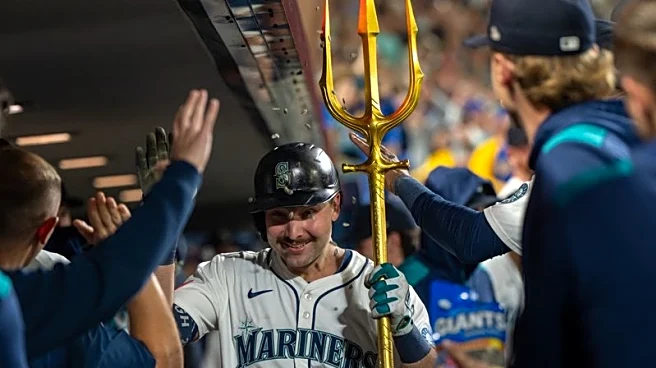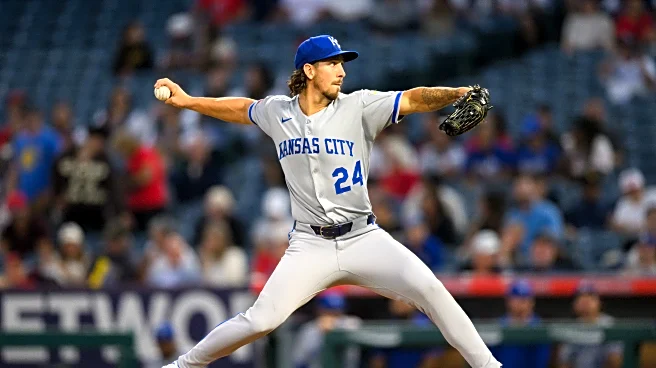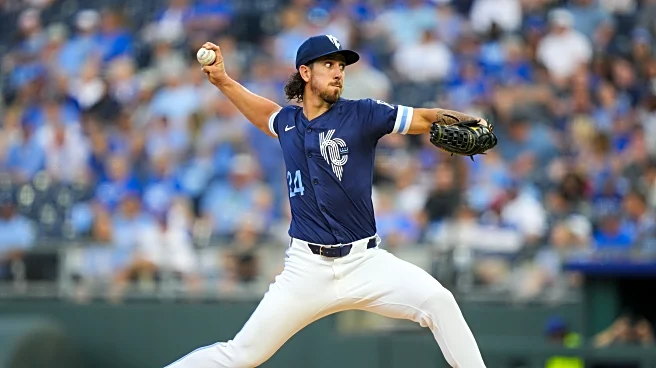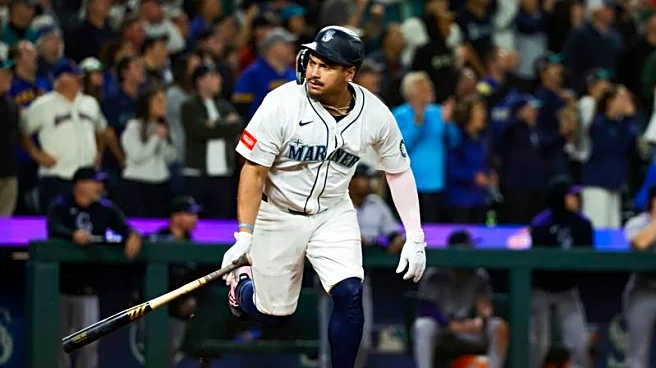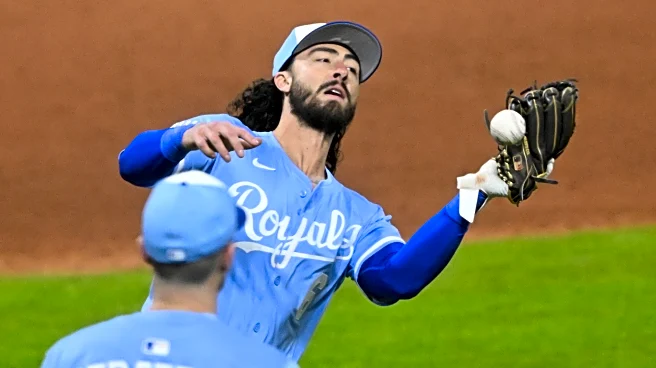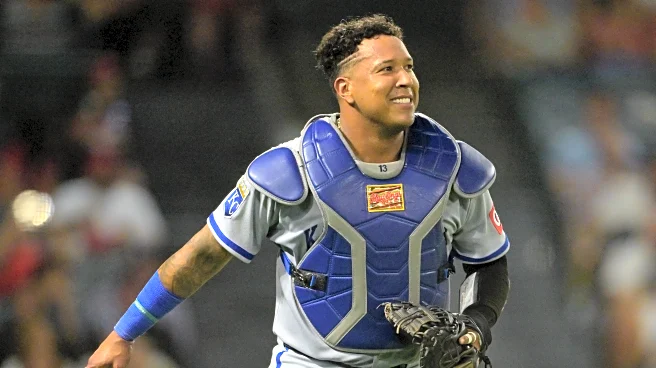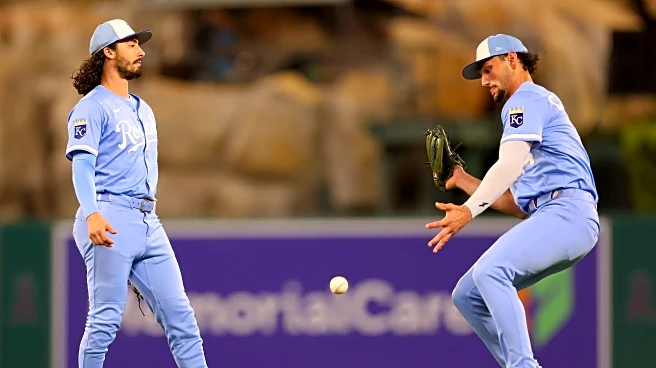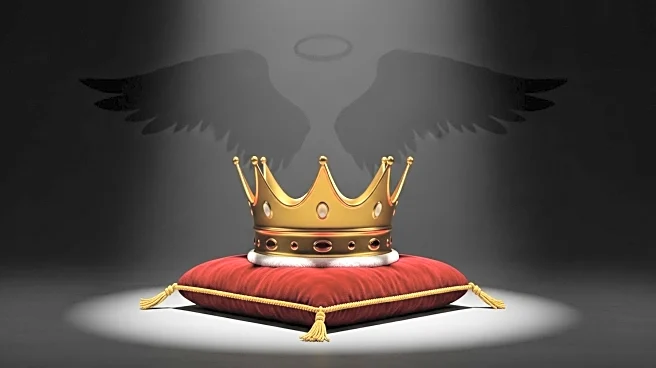Not a lot of new news (especially since Greg stole all the early morning stories for yesterday’s Rumblings; I had already picked out a picture of Tyler Tolbert and everything… and then saw he had the story
yesterday; d’oh)
Moose is going into the Missouri Sports Hall of Fame:
The Missouri Sports Hall of Fame unveiled its lineup of 2025 inductees on Thursday at the InterContinental Kansas City on the Plaza.
Headlining the 2025 class is Royals legend Mike Moustakas, the hard-hitting third baseman who helped lead the team to World Series appearances in 2014 and 2015 and a championship in 2015.
Moustakas, 37, was honored at Kauffman Stadium earlier this year, when he officially retired as a Royal after a 12-year career in Major League Baseball.
With the Royals elimination on Tuesday, Fred Zinkle at Yahoo did a season post-mortem and look ahead:
The outfield is a completely different story. At 28 years old, Isbel is unlikely to ever become more than a below-average hitter. Still, his ability to play strong defense in center field could make him the regular No. 9 batter in the lineup. Isbel also benefits from the fact that the Royals have no one else in the picture, even in the corner spots. Mike Yastrzemski and Randal Grichuk arrived at the trade deadline to stop the bleeding but are both in their mid-30s and heading to free agency. Addressing this position in free agency will be Kansas City’s No. 1 offseason priority.
Having their preferred rotation members — Ragans, Wacha, Lugo, Bubic, Cameron and Michael Lorenzen — secured for next season puts the Royals in an envious position. Ryan Bergert and Stephen Kolek are also options after they contributed to the rotation down the stretch. This group is deep enough that the front office could trade someone for an outfielder, but the Royals are more likely to retain their depth and use Lorenzen as a swingman if everyone is healthy.
Listicle or Listicle-like? We’ve got a couple of those.
At Fangraphs, Michael Baumann proposes to “Let’s Judge Midseason Trades Now”:
But I was mildly surprised to learn that the Royals were massive winners in this year’s midseason trade market. Kolek has generated a full win in just four starts, which I can’t get my head around given his modest strikeout rate. The third guy in the Fermin trade, Ryan Bergert, has also been decent in his eight starts. Yastrzemski has hit well, and even Adam Frazier, whose acquisition I mocked two months ago, is hitting .281 since his return to Kansas City.
Was that enough to put the Royals back in the playoff hunt? No, and it wasn’t especially close, even in the depressingly winnable AL Central. But J.J. Picollo had one of the best hit rates of any GM this deadline, so bully for him.
I’m sure that in time we’ll look back on the 2025 deadline and pick winners and losers based on how various prospects developed, or how various newcomers impacted this year’s postseason. But that’s the future’s problem. In the meantime, congratulations to the Brewers and Royals.
The CBS Sports Staff gives their “2025 MLB Superlatives”:
Most improved player: Maikel Garcia, Royals
You could argue for Cal Raleigh, Trevor Rogers, Brice Turang, and a slew of others. I went back and forth on who to spotlight here before landing on Garcia. This wasn’t a case of a player just getting better results; this was a case of a player improving their processes and being rewarded for it with a five-win season. Garcia improved almost every facet of his game: he upped his walk rate and slashed his strikeout rate; he more than doubled his career home run total while showing more inclination toward pulling the ball; and he even took the extra base more often during the run of play. In the span of six months, Garcia elevated himself from someone who might require a change of scenery to someone who now looks like a key piece of the Royals core. Good on him. — R.J. Anderson
The crew at MLB Pipeline made a listicle of best prospects going to the Arizona Fall League:
Royals: Blake Mitchell, C (No. 1/MLB No. 48)
A broken right hamate bone suffered in Spring Training limited Mitchell to only 49 games with High-A Quad Cities, and as is the case with many injuries in that area, the issue might have sapped some of his power as he hit only two homers and slugged .296 in that span. Getting to play in some friendly confines in Surprise could help as he moves farther and farther away from the initial issue. Only 21, Mitchell still has plenty of time to meet his ceiling as a slugging backstop with a rocket arm.
Blog Roundup?
- Darin Watson at U.L.’s Toothpick: This Date In Royals History–1985 Edition: September 25 –
The Royals snap a 10-game losing streak against Seattle, but of course it’s not easy
- Joel Goldberg: The Work No One Sees
- Jacob Milham at KOK: How ABS could boost Salvador Perez’s legacy—and help the Royals in 2026
- Caleb Moody at KOK: Royals fans must take this reliever’s second-half bounce back with a grain of salt (Sam Long)
It’s the last Friday Rumblings of the regular season. How about a couple of little baseball nuggets for OT? Crazy, I know.
* * * * *
Here’s the first one, from about a month ago:
The first part is kindof fun, right? Korey Lee both pitched and caught in a game against the Royals in late August. I’m not entirely sure why he came into the game as backup C for an inning and then pitched for a pair, but whatever. Who am I to question a rookie manager on a 100-loss team?
The second part is more fun to me. People think of the “olden days” either as more stodgy, because it was a long time ago, or wacky, because we’re in the early days of baseball. This as more towards the latter, but nothing like, say, this 2017 nuttiness (that I referenced back in 2018).
It was the last day of the season and both the Browns and White Sox had winning records, but weren’t going to win the pennant. In the first game of the doubleheader, the Browns rallied to down the White Sox 10-9.
Here’s the box score for that second game. Isbell started his career with the Cubs as a mediocre pitcher. After spending a couple of years in the minors, he returned to the White Sox as a position player, primarily playing 2B and 1B, although he would also play all nine positions in his career.
It gets more fun:
As noted, I love that the local newspaper story is called “BROWNS LOST SECOND GAME, BUT ENJOYED THEMSELVES”.
The Browns only made the playoffs once in their history (before moving to Baltimore), a World Series loss in 1944. In 1922, they finished 2nd to the Yankees and this late September game could have be the one that cost them. The Yankees scored an unearned run in the 8th and two runs in the 9th to turn a 2-0 deficit into a 3-2 win. The pitchers in the game? Bullet Joe Bush, Dixie Davis, Hub Pruett, and Urban Shocker. Gotta love old box scores.
Also, on a blog called Baseball History Daily, in a post aptly titled “Things I Learned on the Way to Looking Up Other Things #28”, Isbell reminds us that 100 years ago was not that different than today:
“’What the dickens are those, Issy,” I asked.
“’Balls and bats.’ Calmly remarked the Terrible Swede.
“’what are you going to do with them?’
“’I’ll tell you,’ remarked Issy, seating himself on the edge of the box. ‘I began collecting them in July and saving them up. I knew everyone in Wichita (Kansas, Isbell’s off-season home) would want one of the balls that was used in the world’s championship series.
* * * * *
Another couple of box scores?
When trying to find that Mets-Yankees games from 2017 I linked to above, I asked Gemini. Hey, maybe this is something that AI might be good at? Nope!
I asked about MLB players with most position changes in a game. It linked to a page on MLB.com about players who played all 9 positions in a single game. Ok, not bad.
And that’s without even mentioning Will Ferrell’s Spring Training stunt. FYI: If MLB let me do this, I would 100% do it!
Gemini’s second answer was less interesting. It mentioned this game in 1986 between the Reds and Mets. It does have the novelty of having the pitching list Orosco. Then McDowell. Then Orosco. And then McDowell again. It was extra innings and Davey Johnson stuck one of them in RF and the other on the mound, switching them a couple of times, trying to gain lefty-righty advantage. The Reds were held scoreless and Orosco walked and scored on Howard Johnson’s 3-run homer in the 14th, so I guess it worked out? Still, not a very exciting box score.
When thinking of Royals box scores, in a perverse way, this is my favorite. I think Max covered it best:
In a game against Detroit, second baseman Esteban German had to leave the game with an injured shoulder. Rather than move a former infielder like Mark Teahen in from right-field to replace him, Bell instead decided to have catcher Jason LaRue make his third base debut, then moved Alex Gordon to shortstop for the first time since high school, and moved the team’s best infield defender, shortstop Tony Pena Jr., to second base. Why hurt yourself at one position, when you can hurt yourself at multiple positions?
* * * * *
Finally, I was going through some baseball cards and ran across the 1954 Bowman card of Joe Nuxhall (#76). Nuxhall was a notable player in his own right (per wiki):
Joseph Henry Nuxhall was an American left-handed pitcher in Major League Baseball, best remembered for having been the youngest player ever to appear in a Major League game and for spending 40 years as a Cincinnati Reds broadcaster.
Nuxhall played primarily for the Cincinnati Reds. Immediately after retiring as a player, he became a radio broadcaster for the Reds from 1967 through 2004, and continued part-time up until his death in 2007. Nuxhall held the team’s record for career games pitched (484) from 1965 to 1975, and still holds the team mark for left-handers. He pitched 2⁄3 of an inning for the Reds on June 10, 1944, at the age of 15 years, 316 days. Called upon for that single game due to player shortages during World War II, Nuxhall eventually found his way back to the Reds in 1952, and the National League All-Star team in 1955 and 1956. Long known as “The Ol’ Left-hander,” he compiled a career earned run average of 3.90 and a record of 135–117 during his 16-season career, with all but five of his victories being earned with the Reds. Nuxhall died in 2007 after a long battle with cancer.
But it wasn’t his information that caught my eye. Check out the back of the card on that link, specifically the trivia question.
If you can’t see the link, it says “What player threw a baseball the fastest?” And the answer was “Mark Koenig, Yankees, threw a ball 127 mph in 1930.” Wait?!? WHAT? HOW HAVE I NEVER HEARD OF THIS?!?
Again, we think back to the early days of baseball as this time with players who just weren’t as good as they are now. Turn of the century nutrition, early 1900s training techniques, the color barrier – they just couldn’t compete today, right?
Baseball Almanac has some fun stuff on its site. There’s even an article entitled “The Fastest Pitcher in Baseball History”. It talks about how in 1917, Walter Johnson threw a ball 134 ft/s, which Google tells me is 91.36 mph. See? A guy nicknamed “The Big Train” who set all of the early strikeout records, was a touch over 90. That sounds about right.
Bob Feller captured a lot of imagination in the 30s and 40s with potential speeds of 104 and 107.9. But the paragraph also mentions he hit 98.6 on something called a “speeding motorcycle test” and Johnson hit 99.7.
So what’s this about 127 mph?!? First off: who is Mark Koenig? He was an… infielder. Huh? He pitched a total of 16 IP, but they were 8.44 ERA bad, so he stuck with his day job as an infielder.
Over at the Yankees subreddit, a user named “sonofabutch” had a nice, detailed profile, akin to some of what we see on this site. He mentions:
During his brief conversion to pitching with Detroit, the Tigers had determined, using the primitive tools of the day, that Koenig’s fastball was the fastest ever recorded… 117 mph! Koenig, years later, dismissed the accuracy of the equipment, saying it was physically impossible for a human to throw a ball as fast as they’d measured him.
Steve Henson, LA Times sports columnist, had this to say about it in an article he wrote for Yahoo back in 2009:
Rudy York, a Cherokee Indian who played in the big leagues in the 1930s and ’40s, was a first baseman. Certainly he was capable of amazing feats – he still holds the American League record for most home runs in one month with 18 – but throwing 127 mph likely wasn’t one of them. Old baseball cards often printed rumors and apocryphal stories on the backs, so, Jim, you probably are remembering correctly. Same with the Koenig story, Charles. A story in Baseball Digest in the 1950s said Koenig was somehow timed throwing a ball 120 mph. However, Koenig himself said it was “humanly impossible” to do so.
Way to take the fun out of that bit of trivia 🙁
The last time we revisited Final Fantasy VII, we did “Tifa’s Theme” (also listed all the previous songs we had done). I believe that means we’re contractually obligated to do “Aerith’s Theme” next:

